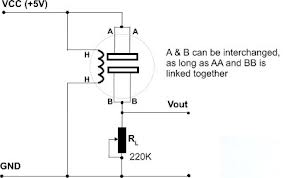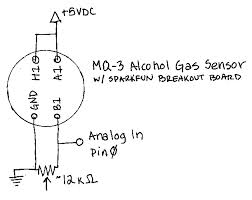| หมวดสินค้า |
|---|
|
ทั้งหมด (1148) สินค้าไม่มีหมวดหมู่ (7) |
| เข้าสู่ระบบ |
|---|
| ตะกร้าสินค้าของคุณ |
|---|
| ไม่มีสินค้าในตะกร้า |
| สินค้าขายดี |
|---|
|
|
| รับข่าวสารทางอีเมล |
|---|
| แท็ก |
|---|
| ดู VDO การทำโครงงานทั้งหมดของ อ.ประเสริฐ ตรวจสอบสถานะไปรษณีย์ |
|
ชื่อสินค้า : ตัว sensor ตรวจจับแอลกอฮอล์ ตัวเปล่าๆไม่มีวงจร ราคา:120บาท
|
|---|
|
ลากเม้าเพื่อ ดูรายละเอียดเพิ่มเติม คลิ๊กดูรูปอื่นได้ จะสั่งซื้อกดที่รถเข็นด้านขวานี้ --)

ลากเม้าเพื่อ ดูรายละเอียดเพิ่มเติม คลิ๊กดูรูปอื่นได้ จะสั่งซื้อกดที่รถเข็นด้านขวานี้ --)

ลากเม้าเพื่อ ดูรายละเอียดเพิ่มเติม คลิ๊กดูรูปอื่นได้ จะสั่งซื้อกดที่รถเข็นด้านขวานี้ --)

ลากเม้าเพื่อ ดูรายละเอียดเพิ่มเติม คลิ๊กดูรูปอื่นได้ จะสั่งซื้อกดที่รถเข็นด้านขวานี้ --)

|
| รายละเอียดสินค้า รหัสสินค้า 004007 |
|---|
|
เข้าชม : 19705 | สั่งซื้อไปแล้ว : มากกว่า5 | Wishlist Rate : 0
จำนวนในstock : stock
เพิ่มลง Wishlist
ตัว sensor ตรวจจับแอลกอฮอล์ ตัวเปล่าๆไม่มีวงจร outputออกเป็น ความต้านทาน ใช้งานง่าย การต่อทำดังนี้ ดูรูปขาที่ 2 ขา 3 กับขา 4 ต่อไฟ 5V ขา 1 ต่อกับGND ขา 2 เป็น output เป็นความต้านทานที่เปลี่ยนแปลงไปตามความเข้มของแอลกอฮอล์ ดู vdo เทส โมดูลตัวนี้ได้ที่นี่ครับ ใช้่ง่ายสุดๆ ครับ เป็นภาคทดสอบ MQ-3
Sensitive for Alcohol, Ethanol, smoke Search for datasheet: http://duckduckgo.com/?q=%22mq-3%22+gas+sensor+filetype%3Apdf รายละเอียด และ source code ดูที่http://lusorobotica.com/index.php?topic=111.0 ดู vdo โครงงานที่ผมใช้ตัวนี้ทำโปรเจคได้ครับ ตรง บทความ การตรวจจับต่างๆ ด้านบนเมนู หรือ คลิ๊กตรงนี้ได้เลยครับ ดูการคำนวนได้ใน web นี้ ผมเอามาแปะไว้นะครับ http://robotics-wr.blogspot.com/2013/03/curve-fitting-for-non-linear-alcohol.html
|
| ภาพสินค้าอื่นๆ คลิ๊กที่รูป หากต้องการ Zoom กดแว่นขยาย ลาก mouse ที่ภาพเลื่อนซ้ายขวาได้ |
|---|
|
300
ราคาสั่งจากหน้า web 120 บาท ราคาซื้อเองที่สาขา 120 บาท |
| สินค้าที่เกี่ยวข้อง |
|---|
|
|
electhailand@gmail.com เมล์นี้ใช้ติดตามสินค้า สั่งสินค้า และสอบถามครับ